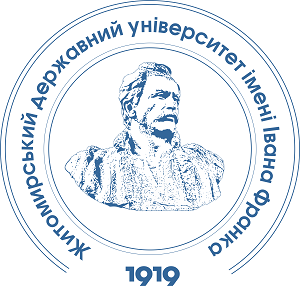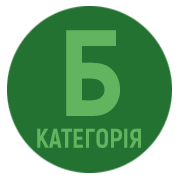DETERMINATION OF HEAVY METAL ION CONTENT IN SOILS TRANSFORMED AS A RESULT OF EXPLOSIONS
DOI:
https://doi.org/10.32782/naturaljournal.13.2025.36Keywords:
heavy metals, soil, military actions, environmental monitoring, atomic absorption spectroscopy, toxic elements, acid extraction, environmental pollutionAbstract
The current environmental situation in Ukraine has significantly deteriorated due to the full-scale war that began in 2022. One of the urgent areas of modern research is the study of the consequences of military actions on the environment, particularly the level of soil contamination with toxic elements. Of special concern are heavy metals released into the environment as a result of explosions of ammunition, destruction of military equipment, ammunition depots, chemical facilities, and infrastructure. Given the high mobility and persistence of such pollutants, research into their concentrations in soils of combat zones is extremely important both for environmental monitoring and public health protection.The aim of this study is to determine the concentrations of heavy metal ions (Cd², Pb², Cu², Zn², Ni², Co²) in soil samples collected from areas affected by explosions of military ordnance and to assess the contamination levels and potential ecological risks. To achieve this objective, modern analytical methods were used: atomic absorption spectroscopy (AAS) for quantitative metal determination, potentiometric pH measurement, and gravimetric analysis for additional sample characterization. Soil samples weresubjected to acid extraction to obtain mobile metal forms, which reflects their bioavailability.The analytical results showed that certain soil samples exceeded the maximum permissible concentrations (MPCs) for lead, cadmium, and copper. In contrast, nickel, zinc, and cobalt concentrations remained significantly below regulatory limits. Some samples showed no detectable levels of specific metals, reflecting the heterogeneity of contamination and the strong influence of local factors.The scientific novelty of the study lies in the assessment of the specific impact of military activities on the quantitative content of heavy metal ions in soil within a defined area affected by explosions.The results confirm the hypothesis regarding the mobilization of heavy metals due to warfare and provide a basis for comparison with background levels in other regions. The practical significance of the research lies in the potential use of the data for environmental monitoring, health risk assessment, and the development of measures for the remediation of contaminated areas.The findings contribute to the existing body of knowledge on the environmental consequences of warfare in Ukraine, complementing previous studies conducted in Dnipropetrovsk, Mykolaiv, and Kherson regions, where localized exceedances of toxic metal concentrations in soils were also observed. Therefore, this work adds to the understanding of the environmental impacts of war and serves as a foundation forfurther research in this field.
References
Андрусишина І. Гігієнічна оцінка впливу металів на ендокринну систему як техногенних факторів малої інтенсивності : дис. … докт. біол. наук : 14.02.01. Київ, 2020. 354 с.
Вплив війни Росії проти України на стан українських ґрунтів. Результати аналізу / А. Сплодитель та ін. Київ : ГО «Центр екологічних ініціатив «Екодія»», 2023. 154 с.
ДСТУ ISO 11047:2005. Якість ґрунту. Визначання кадмію, хрому, кобальту, купруму, плюмбуму, мангану, ніколу та цинку в екстракті, отриманому після оброблення ґрунту «царською водкою». Методи полуменевої та електротермічної атомно-абсорбційної спектрометрії. Київ : Держстандарт України, 2005. 20 с. [Електронний ресурс]. URL: https://online.budstandart.com/ua/catalog/doc-page?id_doc=51731 (дата звернення 10.05.2025).
Corteva надає фермерам можливість перевірити стан ґрунтів, які постраждали від військових дій [Електронний ресурс]. URL: https://surl.li/scbbqw (дата звернення 10.06.2025).
Кроїк Г. Токсикологічні аспекти накопичення та розподілу важких металів у ґрунтах промислових агломерацій. Zoocenosis-2011: Біорізноманіття та роль тварин в екосистемах. Дніпропетровськ : Вид-во ДНУ, 2011. С. 15–18.
Мацера О. Вплив воєнних дій на стан ґрунтів в Україні. Агробізнес сьогодні [Електронний ресурс]. URL: https://agro-business.com.ua/zberezhennia-hruntu/item/31567-vplyv-voiennykh-dii-na-stan- (дата звернення 10.06.2025).
Мірошниченко М. Адсорбційні механізми бар’єрної функції ґрунтів у міграції важких металів. Вісник Запорізького державного університету. 2001. № 1. С. 1–5.
Набиванець Б., Сухан В., Калабіна Л. Аналітична хімія природного середовища : підручник. Київ : Либідь, 1996. 304 с.
Сплодитель А., Кураєва І., Злобіна К. Особливості акумуляції важких металів у ґрунтах урбанізованих ландшафтів м. Бровари. Геологічний журнал. 2020. № 2. С. 39–51.
Яковенко О., Кураєва І., Кроїк Г., Злобіна К. Геохімічні особливості розподілу важких металів у ґрунтах зони впливу підприємств кольорової металургії. Вісник Дніпропетровського університету. Серія «Геологія, географія». 2015. № 23 (1). С. 152–157. https://doi.org/10.15421/111520.
Bondar K., Bakhmutov V., Poliachenko I., Hlavatskyi D., Menshov O. Magnetic and chemical signals of post-blast residue in soil: A case study from northern Ukraine. Science of The Total Environment. 2025. V. 977. P. 179342. https://doi.org/10.1016/j.scitotenv.2025.179342.
Bulba I., Drobitko A., Zadorozhnii Yu., Pismennyi O. Identification and monitoring of agricultural land contaminated by military operations. Scientific Horizons. 2024. № 27 (7). P. 107–117. https://doi.org/10.48077/scihor7.2024.107.
Laptiev V., Giltrap M., Tian F., Ryzhenko N. Assessment of Heavy Metals (Cr, Cu, Pb, and Zn). Bioaccumulation and Translocation by Erigeron canadensis L. in Polluted Soil. Pollutants. 2024. № 4 (3). Р. 434451. https://doi.org/10.3390/pollutants4030029.
Klimentov M. Destruction of Ukraine dam triggered toxic “time bomb”, researchers say [Електронний ресурс]. URL: https://www.washingtonpost.com/world/2025/03/13/kakhovka-dam-environment-heavy-metals-science-study/ (дата звернення 14.03.2025).
Petrushka K., Petrushka I., Holdrych A. Dynamics of heavy metals migration in the soil as a consequence of military actions. Environmental Problems. 2024. V. 9. № 2. Р. 109–116. https://doi.org/10.23939/ep2024.02.109.
Rawtani D., Gupta G., Khatri N., Rao P.K., Hussain C.M. Environmental damages due to war in Ukraine: A perspective. Science of The Total Environment. 2022. № 850. P. 157932. https://doi.org/10.1016/j.scitotenv.2022.157932.
Trokhymenko G., Litvak S., Litvak O., Andreeva A., Rabich O., Chumak L., Nalysko M., Troshyn M., Komarysta B., Sopov D. Assessment of iron and heavy metals accumulation in the soils of the combat zone. Eastern-European Journal of Enterprise Technologies. 2023. V. 5. № 10 (125). Р. 616. https://doi.org/10.15587/1729-4061.2023.289289.
Hlavatskyi D., Menshov O., Poliachenko I., Bakhmutov V., Bondar K. Comparison of magnetic and geochemical parameters in soil for the estimation of heavy metals pollution caused by warfare. GeoTerrace-2024. Lviv, 2024. P. 14. URL: https://eage.in.ua/wp-content/uploads/2024/09/GeoTerrace-2024-067.pdf.







